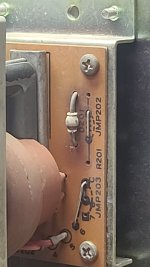FrHilderbrand
New Member
- Joined
- Nov 7, 2023
- Messages
- 6
Merry (belated) Christmas! I have a C.Itoh CIT-80 terminal, which I understand is a DEC VT100-compatible device (and that's why I'm posting it here). I can't find a maintenance manual for the device. The CRT doesn't turn on and there is no power to the -28V, +12V, or -12V rails on the mainboard. The +5V rail and the keyboard power rail look fine, and the NEC 8085AC processor seems to be working well. Caps throughout the machine look fine. There's a diode on the board with the flyback transformer that looks a little crunchy (pictured), but I don't know how to (i) determine what kind of diode it is or (ii) determine what diode, if any, would constitute a drop-in replacement.
Does anyone have access to anything like a repair manual or at parts list for this device? I'm kinda stuck on what to check for and I don't want to rush in and replace parts willy-nilly. Any resources you could point me to would be most appreciated! And if I need to provide more info, please let me know.
Does anyone have access to anything like a repair manual or at parts list for this device? I'm kinda stuck on what to check for and I don't want to rush in and replace parts willy-nilly. Any resources you could point me to would be most appreciated! And if I need to provide more info, please let me know.

